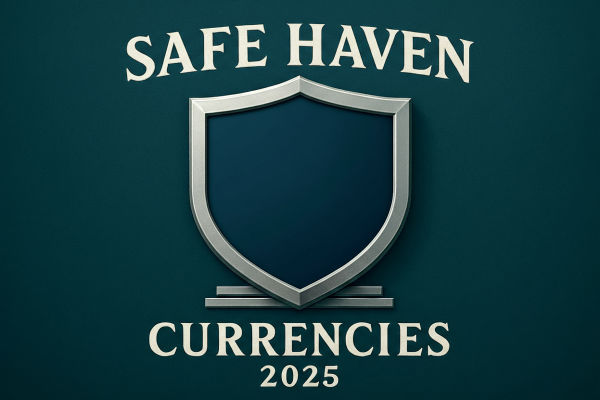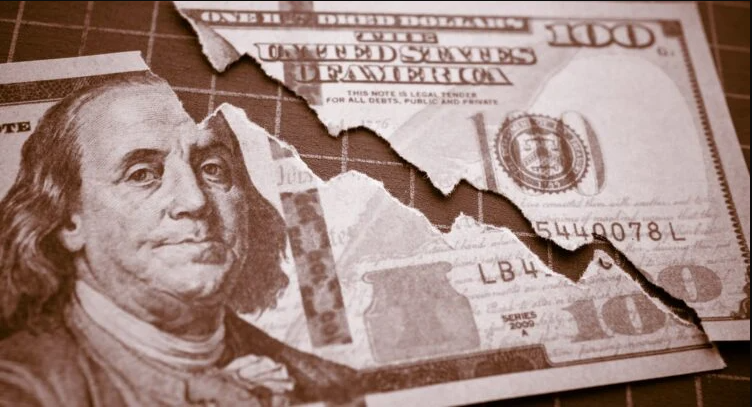Imagine a surprise geopolitical shock hits markets at 2 AM GMT, leading to reduced liquidity. Traders scramble for shelter. Which currencies move first? Which acts as the calm harbour? Knowing that ahead of time helps you hedge or protect capital.
Unfortunately, in 2025, the answers are more nuanced than "just buy dollars." Let's walk through why.
What Are Safe Haven Currencies?

A safe-haven currency typically exhibits these traits during stress:
Deep liquidity (low slippage when buying large amounts)
Trusted institutions (stable central banks, limited capital controls)
Reserve demand (widely held in official reserves)
Political and macro stability (low risk of sudden policy shocks)
Empirically, safe-haven behaviour is observed when currencies appreciate during risk-off episodes. However, behaviour can change with the type of shock and monetary policy differences.
Safe Haven Currencies Performance So Far (2025)

1) USD
Firstly, USD's performance in 2025 has been mixed, with it weakening in specific risk episodes as investors rotate to JPY/CHF or gold before ultimately flowing to U.S. Treasuries in extreme stress.
Additionally, the U.S. dollar index (DXY) experienced notable volatility and periods of weakness as markets priced Fed easing; Reuters and index data show DXY fell into the mid-to-high 90s in parts of 2025. [1]
2) CHF
On the other hand, the Swiss franc surged sharply in April 2025 (around a ~9% monthly move vs USD reported at the time), prompting SNB scrutiny and talk of intervention.
3) JPY
The yen also strengthened in several 2025 risk episodes, but remains sensitive to Bank of Japan signals as markets priced a possible BOJ hike in late 2025.
For instance, USD/JPY fell approximately mid-single digits throughout various risk events in 2025 as safe-haven flows into the yen and funding unwinds occurred.
Why JPY, CHF and USD Remain in the Lead

1. Japanese Yen (JPY): The Funding and Counterparty Safe Haven
The yen's safe-haven behaviour often stems from funding-trade dynamics: in stable times, investors lend in yen to invest in other assets; when risk dissipates, that funding reverses, leading to a stronger yen.
In 2025, episodes of yen strength were linked to market stress and to emerging signs of BOJ policy tightening. The BOJ's minutes and statements revealed that certain board members discussed potential future rate changes, leading to stronger reactions in the yen. [2]
2. Swiss Franc (CHF): Compact Economy and Big Financial Sector
Switzerland's franc is prized for its perceived stability and the SNB's readiness to defend the currency. The April 2025 franc surge illustrated how capital can rush into CHF, prompting SNB scrutiny (sight deposit moves and discussion of intervention). [3]
This positions CHF as a preferred choice during specific risk events, but it simultaneously increases the risk that traders must monitor.
3. U.S. Dollar: Reserve Anchor, But Conditional
The dollar remains dominant in global reserves (around 58% of disclosed reserves, per Fed/IMF data). That structural dominance means the USD is a final refuge in many crises.
However, 2025 showed that the dollar's behaviour is conditional. For example, when a shock is particularly U.S.-centric or when Fed cuts are priced, the USD can temporarily weaken.
Investors would then rotate to sharper short-term hedges such as JPY/CHF or gold before returning to Treasuries in more severe stress.
Is the USD Still a Safe Haven Currency in 2025?

This year, the dollar's performance has raised questions. In the first half of 2025, USD slipped against both the yen (USD/JPY down ~8% from April highs) and the franc (USD/CHF down ~6% mid-year) as markets priced in Federal Reserve rate cuts and narrowing yield differentials.
So is the dollar losing its safe-haven status? The answer is nuanced:
Yes, USD remains a safe haven structurally:
Still the world's 1st reserve currency.
U.S. Treasuries remain the most liquid "risk-off" asset globally.
In true global crises (geopolitical shocks, systemic risks), flows still rush into USD.
But in 2025, it shows caveats:
Fed's dovish stance reduces yield appeal, allowing JPY and CHF to outperform in "mild" risk-off periods.
Investors are increasingly diversifying into CHF, JPY, and gold for more immediate hedges.
The dollar works best in extreme shocks, less so in moderate pullbacks.
Bottom line: USD is still a safe haven, but not always the first responder. In 2025, it acts more as the anchor of last resort rather than the nimblest hedge, where yen and franc often take the lead.
How Traders & Investors Can Use Safe-Haven Currencies
1) Hedging Equity Risk:
During equity drawdowns, traders may raise long positions (short USD/JPY or USD/CHF) to offset losses.
2) Carry-Trade Risk Management:
As yen has historically been a funding currency, sudden unwinds are tradeable.
3) Options Hedges:
Institutions purchase USD puts or JPY calls as insurance before the event.
4) Macro Overlays:
Allocate a small tactical position in CHF/JPY during early signs of global stress, but keep position sizing conservative.
Practical Checklist Before You Rotate Into a Safe Haven
Confirm the macro trigger (credit shock, geopolitical news).
Check liquidity & time of day to avoid slippage.
Verify central bank posture (BOJ/SNB/Fed).
Confirm flow/volume or bond demand (Treasury yields, bond basis).
Align with higher timeframe trend (daily/weekly).
Size positions and set a strict stop.
Frequently Asked Questions
Q1: Which Currency Is the Safest in 2025?
No single "safest" currency exists. JPY, CHF and USD each have episodes in which they outperform.
Q2: Is the USD Still a Safe Haven Despite Its 2025 Weakness?
Structurally, yes. The USD remains the primary reserve currency and a last-resort refuge in many crises.
Q3: When Does USD Act as a Safe Haven and When Does It Fail?
The USD remains stable when global liquidity is the primary concern and investors look for Treasuries. It may not serve as a safe haven if the shock is particularly detrimental for the U.S. (e.g., fiscal crisis) or if the Fed is reducing rates sharply while other central banks maintain theirs.
Q4: Do Safe Havens Protect Against All Risks?
No. They typically protect against market liquidity and risk-off shocks, but may not cover currency-specific or policy-driven shocks.
Conclusion
In conclusion, safe-haven currencies remain essential pieces of risk management in 2025, but they're not a magic shield.
Thus, use a regime-aware approach: monitor central-bank signals (BOJ, SNB, Fed), confirm moves with flow/volume and correlated assets (gold, Treasuries), and apply strict risk controls.
Action plan: If you want to hedge equities this week, run the checklist above, check live USD/JPY and EUR/CHF charts, and consider options to cap downside while retaining upside potential.
Disclaimer: This material is for general information purposes only and is not intended as (and should not be considered to be) financial, investment or other advice on which reliance should be placed. No opinion given in the material constitutes a recommendation by EBC or the author that any particular investment, security, transaction or investment strategy is suitable for any specific person.
Sources
[1] https://www.reuters.com/world/africa/dollar-defensive-before-data-releases-risk-us-government-shutdown-2025-09-29/
[2] https://www.reuters.com/markets/us/some-boj-policymakers-called-future-rate-hikes-july-minutes-show-2025-09-25/
[3] https://www.reuters.com/world/europe/swiss-francs-surge-tariff-turmoil-pressures-snb-act-2025-04-23/

























